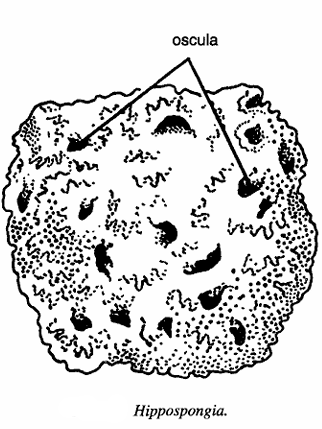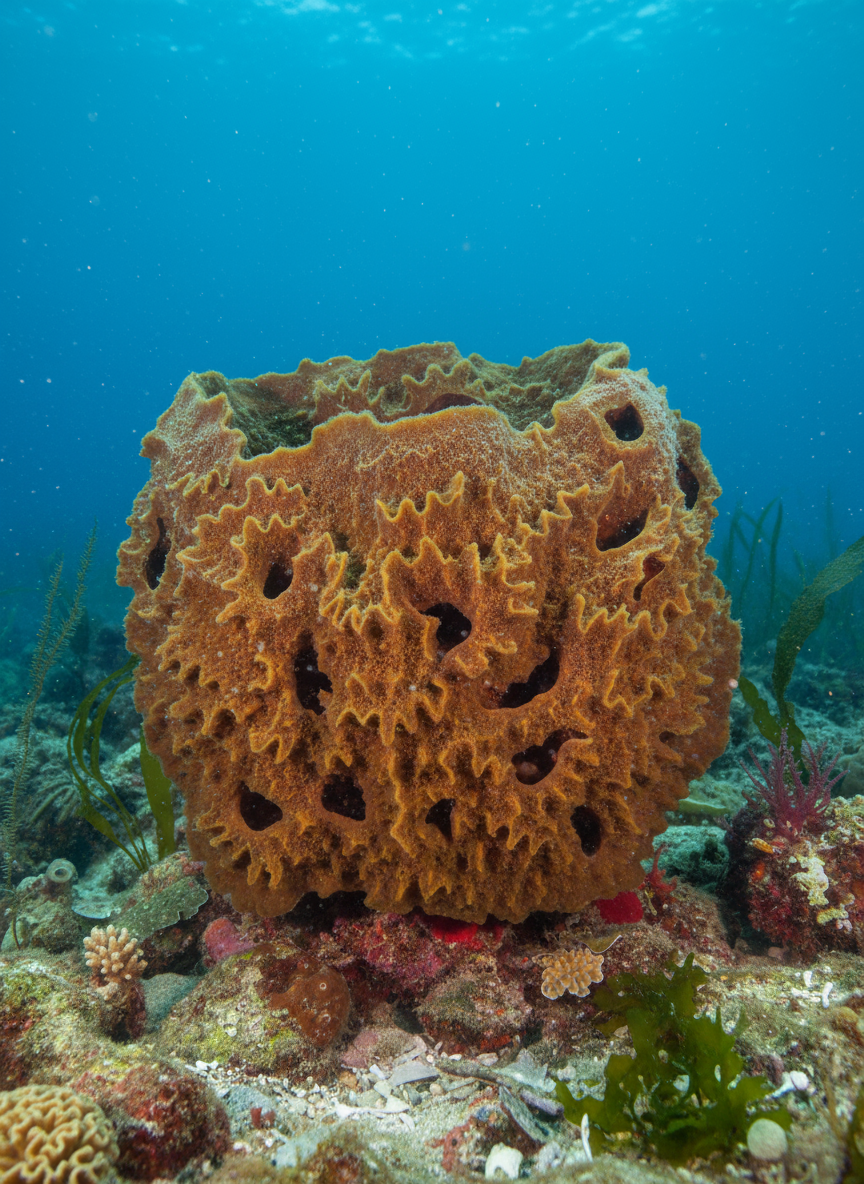Classification of Hippospongia
- Phylum: Porifera (Pore-bearing aquatic animals with cellular grade organization)
- Class: Demospongiae (Sponges with skeletons comprised of spongin fibers and siliceous spicules)
- Order: Dictyoceratida (Sponges characterized by a skeleton mainly of spongin without siliceous spicules)
- Family: Spongiidae (Sponges with fibrous skeletons often used for commercial sponges)
- Genus: Hippospongia
Hippospongia is a genus of marine sponges belonging to the family Spongiidae. These sponges are notable for their porous, honeycomb-like structure and significant ecological and economical importance, particularly as natural bath sponges.

Habit and Habitat
Hippospongia species are sessile marine organisms commonly found attached to hard substrates such as rocks, corals, and muddy or sandy bottoms. They inhabit shallow coastal waters, preferring depths ranging from 5 to 80 meters, especially within the Mediterranean Sea, Western Atlantic, and tropical Indo-Pacific regions. These sponges thrive in clear, nutrient-rich waters with moderate currents.
Geographical Distribution
Hippospongia is widely distributed, with a strong presence in the Mediterranean, the Aegean Sea, Caribbean, and tropical Atlantic and Pacific oceans. Their distribution spans temperate to tropical zones, often occupying habitats ranging from rocky shelters to ocean caves. Some species are also found in deeper waters.~ost valuable American sponge. Found in Mediterranean, West Indies and common in Florida.
General Characteristics
- Commonly called as horse sponge.
- Body massive and permeated by large, often cavernous canals; fibres delicate and forming an irregular network.
- Body is covered by a dark and dead membrane provided with numerous flagellated chambers.
- Body surface is raised at several places bearing oscula.
- It harbours several small commensal worms and crustaceans.
- A single sponge is made up of few to many individuals, provided with few to many oscula. Skeleton is made up of spongin; siliceous spicules are absent. It has great water-imbibing capacity.
- Water enters by prosopyles and leaves by aphodus. Canal system is leuconoid type with aphodal chambers.
- Sponge can live up to 50 years, growing massively and extensively.
- This sponges typically have a rounded or irregular shape, with a porous, honeycombed surface from numerous oscula.
- Coloration varies but often includes brownish, yellowish, or darker shades.
- The skeleton is predominantly composed of dense spongin fibers, providing elasticity and durability, making them suitable for commercial harvesting.
- These sponges often harbor a variety of symbiotic organisms, such as crustaceans and worms, benefiting the marine ecosystem.
- They secrete bioactive compounds with antifungal and antibacterial properties, making them subjects of pharmaceutical interest.
- It reproduces sexually year-round, being hermaphroditic with synchronized egg fertilization across populations. Larvae are planktonic before settling and growing.

Special Features
The unique porous architecture and bioactive chemical production are notable features are, contributing to their ecological role and historical importance in society for cleaning and medicinal uses. Their resilience to environmental fluctuations and rapid larval dispersal aid in their widespread success.
Identification
Hippospongia is identifiable by its honeycomb-like porous structure, variable color, and rounded shape. Microscopically, the dense fibrous skeleton composed of spongin is a distinctive trait. Odor, texture, and habitat further assist in field identification.
References:
- https://en.wikipedia.org/wiki/Hippospongia_communis
- https://www.sealifebase.se/summary/Hippospongia-lachne
- https://www.sealifebase.org/Country/CountrySpeciesSummary.php?c_code=788&Genus=Hippospongia&Species=communis
- https://en.wikipedia.org/wiki/Hippospongia
- https://animalia.bio/hippospongia-communis
- https://spo.nmfs.noaa.gov/sites/default/files/pdf-content/fish-bull/1202pauly.pdf
- http://www.marinespecies.org/Porifera/porifera.php?p=taxdetails&id=132377
- https://animaldiversity.org/accounts/Hippospongia/classification/
- https://www.gbif.org/species/2238339
